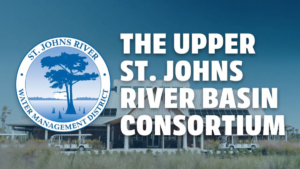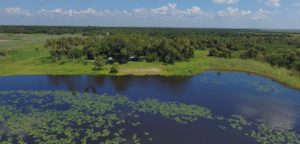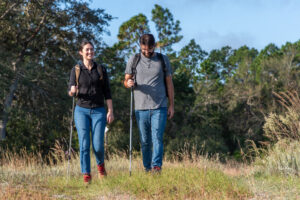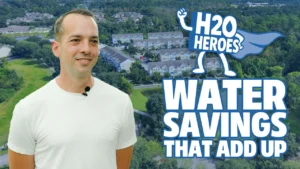Getting your boots wet: How field training helps District staff protect wetlands
When people hear the word “wetland,” they might picture a murky swamp buzzing with mosquitos. But wetlands are much more than that—they’re complex, vital ecosystems that play a major role in natural resilience.
For staff at the St. Johns River Water Management District, understanding and protecting wetlands begins with a process called wetland delineation—determining where a wetland starts and ends. Think of it like tracing the outline of a giant puddle, except the edges shift with the topography, and the clues may be hidden in the soil or the plants growing there.
Accurately identifying wetlands is critical for making sound decisions about land use, development and conservation. As a regulatory agency of the state, the District uses the Environmental Resource Permitting (ERP) program to help ensure that new construction does not result in a loss of functions to wetlands, increase flood risks or pollute waterways.
Regulatory staff are on the front lines of this work. By reviewing permit applications and conducting compliance checks, they help protect wetland functions and ensure consistent application of the rules. Field training enhances their ability to do that—strengthening their understanding of wetland indicators and ensuring reliable and consistent delineation across the District.
To make this determination, scientists look at three key indicators:
- Soil that’s often dark, stripped of color, or mucky,
- Vegetation made up of plants that thrive in wet conditions, and
- Hydrology, or signs of water—even if it’s only there during certain times of the year.
To help staff develop these skills needed for this important work, the District offers hands-on training to staff at least once a year. This spring, staff gathered at Hal Scott Regional Preserve and Park (Orange County) and Jennings State Forest (Clay County) for in-the-field learning.
Roughly 50 regulatory scientists and hydrologists took part in the training. Led by subject-matter experts from across the District, the training focused on identifying wetland vegetation, recognizing hydrologic indicators, inspecting soil and understanding the wetland delineation rule. It was a chance for staff to sharpen their skills, stay up to date on best practices and build consistency across the District.
What made this training especially valuable was its immersive and collaborative nature.
“Plants are hard to learn from a picture,” said Grace Clements, a regulatory scientist who led the rule section of the training. “But in the field, you can touch the leaves, feel the soil, ask questions in the moment. All the science we do becomes so much easier to understand when it’s hands-on. A lot of us scientists learn faster that way.”
Participants were grouped based on experience level, allowing everyone—from beginners to seasoned staff—to get the most out of the experience.
“The beginners were able to start with the basics and move at their own pace,” Clements explained. “That way, they could focus on the details they may not have learned yet. Meanwhile, the more advanced groups had complex, conversation-driven sessions. It’s a good example of how the training was structured to support all skill levels.”
For Isaac Crenshaw, a hydrologist attending for the first time, the experience was eye-opening.
“This training really helped me connect the dots and understand why certain conditions exist in wetlands,” said Crenshaw. “It gave me a clearer perspective on how to collaborate with our regulatory staff—and we got to see some pretty cool plants.”
Clements emphasized the value of learning from within: “It’s not every day you get to learn from true experts in the field, and what makes it even more special is that they’re part of our team! Theres so much valuable knowledge being shared. When I was a participant instead of a trainer, I remember how collaborative and supportive the learning environment felt. You’re out there learning side by side with your peers.”
Sometimes, the best way to understand a wetland isn’t from a map or manual—it’s with your boots on, in the muck, listening to the sounds of nature and the quiet confidence of a teammate who’s been there before.





